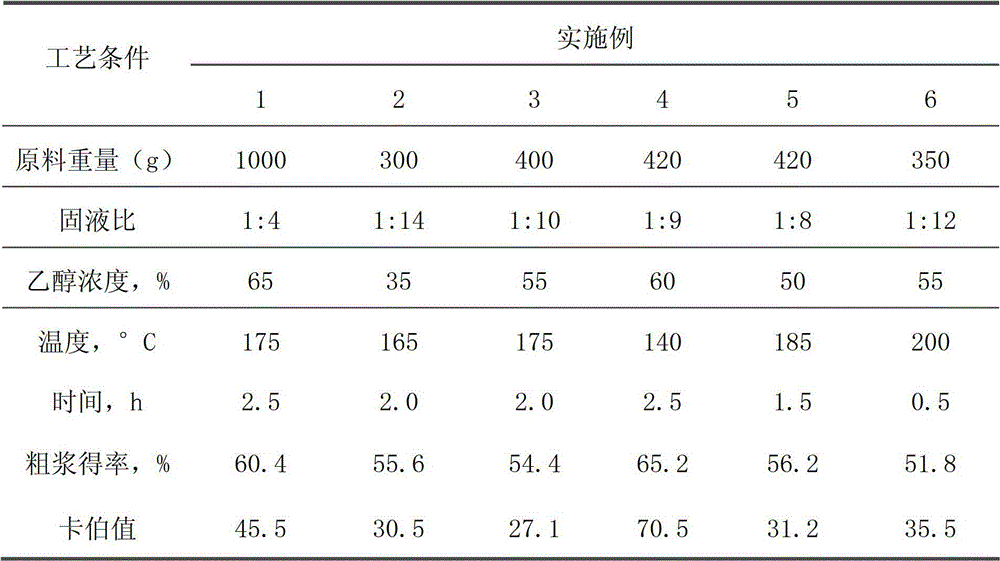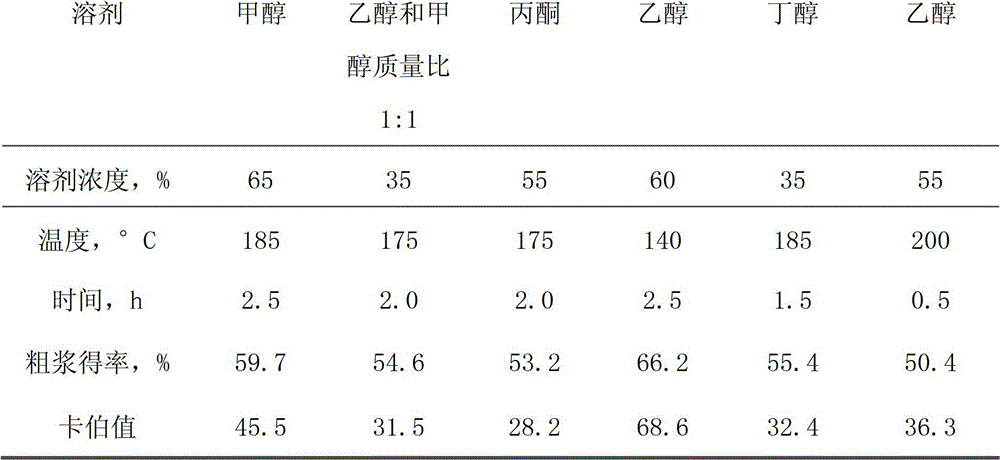Pulping method by catalysis of low boiling point solvent with diluted acid generated from xylose residue and furfural residue
A low-boiling-point solvent and furfural slag technology, applied in the field of papermaking, can solve the problems of high-boiling alcohol with high boiling point and high recovery energy consumption, and achieve the effects of reducing waste liquid discharge, simple pulping method, and easy industrial scale-up production
- Summary
- Abstract
- Description
- Claims
- Application Information
AI Technical Summary
Problems solved by technology
Method used
Image
Examples
Embodiment 1
[0024] Embodiment 1: Xylose residue pulping
[0025] According to the process parameters shown in Table 1, the xylose residue after producing xylose will be put into 5 liters of reactors equipped with cooling coils by using corncobs as raw materials, adding ethanol aqueous solution, and desorbing under certain temperature and pressure. Lignin cooking reaction. After reacting for a certain period of time, pass cooling water into it to cool rapidly to 40-90°C, and filter the reaction product. After filtering, wash the filter residue twice with ethanol aqueous solution according to the solid-to-liquid ratio of 2-10, and filter. The filter residue is prepared from xylose residue. Cellulose coarse slurry; after the filtrate and washing liquid are mixed, the ethanol is distilled off, and the remaining raffinate is filtered, and the filter residue is purified lignin, which can be used as a raw material for other products. The test results are shown in Table 1.
[0026] Table 1 Expe...
Embodiment 2
[0028] Embodiment 2: pulping of furfural slag
[0029] According to the process parameters shown in Table 2, the furfural slag produced from furfural by using corncobs as raw material is put into a 5 liter reaction kettle equipped with a cooling coil, and the solvent aqueous solution is added to carry out delignification at a certain temperature and pressure. Vegetarian cooking reaction. After reacting for a certain period of time, pour cooling water into it to cool rapidly to 40-90°C, and filter the reaction product. After filtering, wash the filter residue with an aqueous solvent solution according to the solid-to-liquid ratio of 2-10, and filter. The filter residue is cellulose crude prepared from furfural slag. Slurry; After the filtrate and washing liquid are mixed, the solvent is distilled off, and the remaining raffinate is filtered, and the filter residue is purified lignin, which can be used as a raw material for other products.
[0030] Table 2 Experimental process ...
PUM
 Login to View More
Login to View More Abstract
Description
Claims
Application Information
 Login to View More
Login to View More - R&D
- Intellectual Property
- Life Sciences
- Materials
- Tech Scout
- Unparalleled Data Quality
- Higher Quality Content
- 60% Fewer Hallucinations
Browse by: Latest US Patents, China's latest patents, Technical Efficacy Thesaurus, Application Domain, Technology Topic, Popular Technical Reports.
© 2025 PatSnap. All rights reserved.Legal|Privacy policy|Modern Slavery Act Transparency Statement|Sitemap|About US| Contact US: help@patsnap.com



